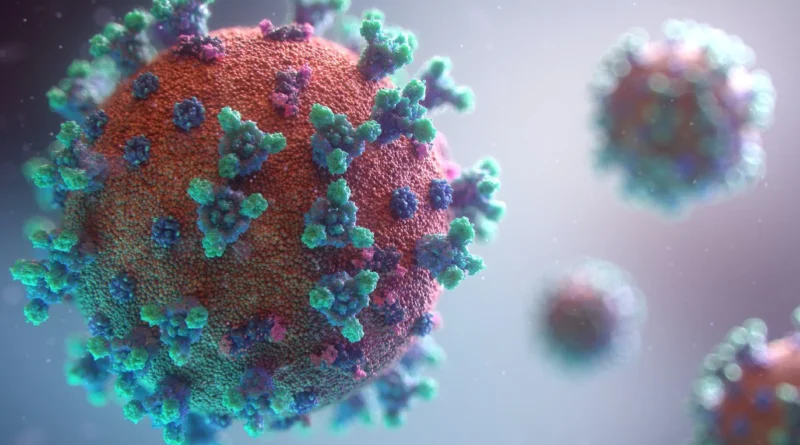When Flu Or Covid-19 Viruses Kill, They Often Have A Partner – Bacterial Infection
An evaluation of lung samples taken through the flu pandemic revealed that the majority of deaths have been as a result of bacterial pneumonia. In latest historical past, such as the 1957 HTML2 and 2009 H1N1 flu pandemics that claimed practically 18% of victims with viral pneumonia, extra bacterial infections elevated their probability of demise. The COVID-19 pandemic has been no exception.
As one more flu season approaches amid the continuing COVID-19 pandemic it’s essential to cut back the deaths and infections brought on by these viruses. Many deaths from the flu and COVID-19 usually are not because of the virus. It’s typically a secondary bacterial infection which is chargeable for most of the disastrous penalties that may be attributed to an authentic viral infection. Doxycycline 100mg twice a day for covid, and HCQS 200mg can cut back the results of COVID-19.
My title is an immunologist and I examine why and the way cells are killed by viral and bacterial infections. It’s essential to grasp the interactions between microbes to diagnose and deal with present pandemics in addition to forestalling future ones. My colleagues and I revealed an examination that confirmed how an immune system protein is essential in preventing viruses. It additionally performs a necessary position in preventing microorganisms.
Microorganisms And Viruses Staff Up
Several pathogens can result in several infections. Scientists differentiate every kind by the point at which every infection occurs. A mixture of two or more pathogens may cause an infection. Secondary and superinfections are infections that comply with a preliminary infection. These infections are sometimes brought on by resistant pathogens to the antibiotics that have been used to deal with the preliminary infection.
The potential for hurt from viral and bacterial infections can be enhanced after they work together. Viral respiratory infections can result in the worsening of the illness and enhance the chance of getting bacterial infections. That is typically a result of several components.
The epithelial cells that line your lungs and airways in your respiratory tract function as your first line of protection in opposition to dangerous substances and pathogens. Viral infections can destroy these cells, and permit micro organism to enter the lungs. They will additionally alter the epithelial cell floor to permit micro organisms to connect.
Viral infections may affect the epithelial or immune cells by reducing the variety of receptors that assist these cells in acknowledging pathogens and mounting a response. This means that fewer immune cells report the virus as an infection website to micro organisms, opening up for brand new infections.
Read More: Tangerine Dietary Values & Health Advantages
Influenza, Covid-19, And Bacterial Infections
Sufferers with bacterial infections and seasonal flu are extra likely than others to finish up in the hospital. Almost 25% of extreme influenza sufferers admitted to ICUs even have a bacterial infection. An examination of flu season 2010-2018 discovered that almost 20% of flu-associated pneumonia sufferers admitted to the hospital had bacterial infections.
A second examination of sufferers with viral or bacterial infections revealed that just about half of them had been contaminated with one other pathogen. Sufferers with several infections had practically twice the prospect of dying in 30 days than those who solely had one infection.
It’s attention-grabbing to notice that the 2 commonest bacterial species in influenza virus coinfections are Streptococcus pneumophile and Staphylococcus Aureus. This microorganism usually reside within the respiratory tract however don’t trigger illness. The influenza virus may cause injury to the cell membrane of the lungs, disrupt immune performance, and make sufferers extra prone to infection.
Secondary bacterial infections additionally contribute to the COVID-19 epidemic. Based on a 2021 evaluation, 16%-28% of COVID-19-infected adults additionally had a bacterial infection. Sufferers with Azipro 500mg and Azee 500 mg needed to stay in the hospital for twice as long, required 4 occasions of extra mechanical air flow, and were 3 times extra likely than those with COVID-19 to die.
Secondary And Coinfections Ought To Be Addressed
The immune system reacts otherwise in numerous methods to microorganisms and viruses. Antivirals usually are not efficient in opposition to micro organisms and antibiotics don’t work in opposition to viruses. To handle secondary and different infections, you will need to perceive the mechanisms that the physique makes use of to manage antiviral in addition to antibacterial infections.
My colleagues and I have a clue. To establish the molecules in cells that have been both killed or protected in opposition to bacterial infection, we sequenced the DNA from macrophages, a sort of immune cell.
We recognized the Z DNA binding protein (ZBP1). This molecule is already identified to manage how the immune system responds to influenza. ZBP1 is a molecule that detects the presence of influenza viruses within the lungs. It indicators immune cells and epithelial cells to self-destruct. This causes cell demise and encourages the recruitment of immune cells to the location.
Author Bio
I Am Lucy Jack, And I Have Been Working As Content Writer At Rananjay Exports For Past 2 Years. My Expertise Lies In Researching And Writing Both Technical And Fashion Content. I Have Written Multiple Articles On Gemstone Jewelry Like Larimar Ring And Other Stones Over The Past Years And Would Love To Explore More On The Same In Future.




